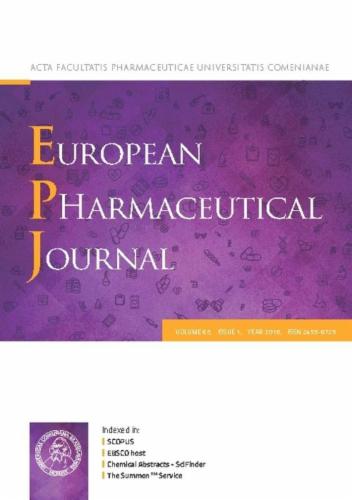结合SPECT/CT成像和计算建模方法评估哮喘患者的通气不均匀性和颗粒沉积
IF 4.3
3区 医学
Q1 PHARMACOLOGY & PHARMACY
引用次数: 0
摘要
目的本研究通过单光子发射计算机断层扫描(SPECT)成像、基于定量计算机断层扫描(qCT)成像的分组以及全肺计算模型,对哮喘表型及其与通气异质性和粒子沉积的关系进行了研究。材料与方法本研究分析了两个数据集:一个数据集来自于对 6 名哮喘受试者进行的 SPECT 和 CT(SPECT/CT)联合研究,另一个数据集来自于严重哮喘研究项目(SARP),共包含 209 名哮喘受试者。35 名先前获得的健康受试者的数据作为对照组。每位受试者都接受了完全吸气和呼气时的 CT 扫描以及肺功能测试(PFT)。SPECT/CT 研究包括通气 SPECT 成像。对气道直径、壁厚、空气潴留百分比(AirT%)和小气道疾病百分比(fSAD%)等关键 qCT 变量进行了评估。针对特定受试者的全肺流体和粒子动力学(CFPD)计算模型可预测气道阻力、粒子沉积分数和通气异质性的变异系数(CV)。受试者被分为四个预定义的哮喘成像亚组/簇,严重程度依次增加(C1-C4)。根据 SPECT 测量结果验证了 CFPD 预测的 CV。我们比较了不同 SARP 分组的 PFT、qCT 和 CFPD 变量,并分析了粒子在大传导气道、小传导气道和呼吸道中的沉积分数。这种差异与基于传统肺活量测定指南所定义的严重程度亚组的通气状况差异不明显形成鲜明对比。不同哮喘群组的气道阻力差异很大。虽然 C3 和 C4 组群都代表严重哮喘,但只有 C4 组群的 AirT% 显著增加,主要原因是 fSAD%。由于炎症表型不同--C3 的大传导气道和小传导气道壁增厚,C4 的小传导气道和呼吸道的 fSAD% 和 Emph% 升高--细颗粒(5 μm)和超细颗粒(1 μm)在到达 C3 和 C4 的相应区域时更为有效。鉴于 C2 和 C4 具有超反应表型,传导气道狭窄,因此细颗粒能更有效地到达这些区域。结论:我们基于聚类的 CFPD 方法增强了对哮喘通气异质性的了解,并有望完善吸入疗法的策略。本文章由计算机程序翻译,如有差异,请以英文原文为准。

Assessment of ventilation heterogeneity and particle deposition in asthmatics using combined SPECT/CT imaging and computational modeling approaches
Purpose
This study investigated asthma phenotypes and their associations with ventilation heterogeneity and particle deposition by utilizing Single-Photon Emission Computed Tomography (SPECT) imaging, quantitative Computed Tomography (qCT) imaging-based subgrouping, and a whole-lung computational model.
Materials and methods
Two datasets were analyzed: one from a combined SPECT and CT (SPECT/CT) study with six asthmatic subjects, and another from the Severe Asthma Research Program (SARP) with 209 asthmatic subjects. Data from 35 previously acquired healthy subjects served as a control group. Each subject underwent CT scans at full inspiration and expiration, along with pulmonary function testing (PFT). The SPECT/CT study included ventilation SPECT imaging. Key qCT variables such as airway diameter, wall thickness, percentage of air trapping (AirT%), and percentage of small airway disease (fSAD%) were assessed. A subject-specific whole-lung computational fluid and particle dynamics (CFPD) model predicted airway resistance, particle deposition fraction, and the coefficient of variation (CV) for ventilation heterogeneity. Subjects were categorized into four predefined asthma imaging subgroups/clusters with increasing severity (C1-C4). CFPD-predicted CVs were validated against SPECT measurements. We compared PFT, qCT, and CFPD variables across SARP clusters and analyzed particle deposition fractions in large conducting, small conducting, and respiratory airways.
Results
Cluster C4 exhibited a significantly distinct ventilation profile compared to other clusters and health controls. This distinction contrasted with the insignificant differences between ventilation profiles in severity subgroups defined by conventional spirometry-based guidelines. Airway resistance varied significantly across the asthma clusters. Although both C3 and C4 clusters represented severe asthma, only C4 showed a significant increase in AirT%, primarily due to fSAD%. Since inflammatory phenotypes differ — C3 with wall thickening in large and small conducting airways, and C4 with elevated fSAD% and Emph% in small conducting and respiratory airways — fine particles (∼5 μm) and extrafine particles (∼1 μm) are more effective at reaching the respective regions in C3 and C4. Given that C2 and C4 have hyper-responsive phenotypes with narrowed conducting airways, fine particles are more effective in reaching these areas. Airway enlargement in targeted segments of the left lower lobe resulted in improved particle deposition.
Conclusion
Our cluster-informed CFPD-based approach enhances the understanding of ventilation heterogeneity in asthma and holds potential for refining strategies for inhalational therapies.
求助全文
通过发布文献求助,成功后即可免费获取论文全文。
去求助
来源期刊
CiteScore
9.60
自引率
2.20%
发文量
248
审稿时长
50 days
期刊介绍:
The journal publishes research articles, review articles and scientific commentaries on all aspects of the pharmaceutical sciences with emphasis on conceptual novelty and scientific quality. The Editors welcome articles in this multidisciplinary field, with a focus on topics relevant for drug discovery and development.
More specifically, the Journal publishes reports on medicinal chemistry, pharmacology, drug absorption and metabolism, pharmacokinetics and pharmacodynamics, pharmaceutical and biomedical analysis, drug delivery (including gene delivery), drug targeting, pharmaceutical technology, pharmaceutical biotechnology and clinical drug evaluation. The journal will typically not give priority to manuscripts focusing primarily on organic synthesis, natural products, adaptation of analytical approaches, or discussions pertaining to drug policy making.
Scientific commentaries and review articles are generally by invitation only or by consent of the Editors. Proceedings of scientific meetings may be published as special issues or supplements to the Journal.

 求助内容:
求助内容: 应助结果提醒方式:
应助结果提醒方式:


